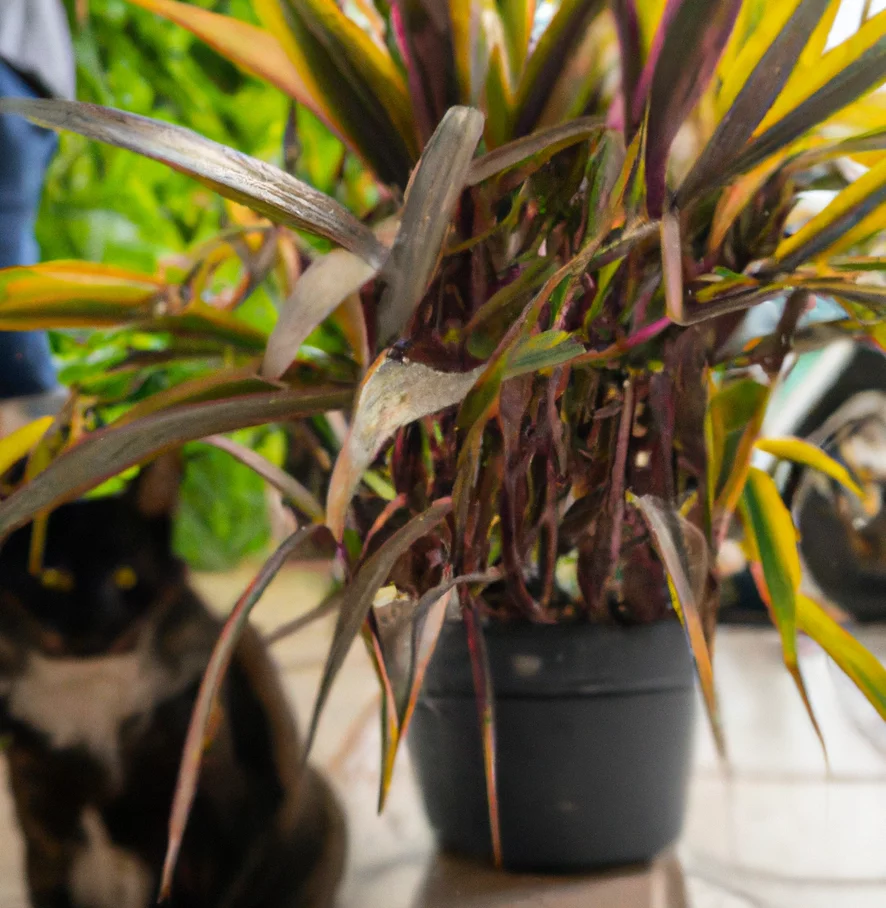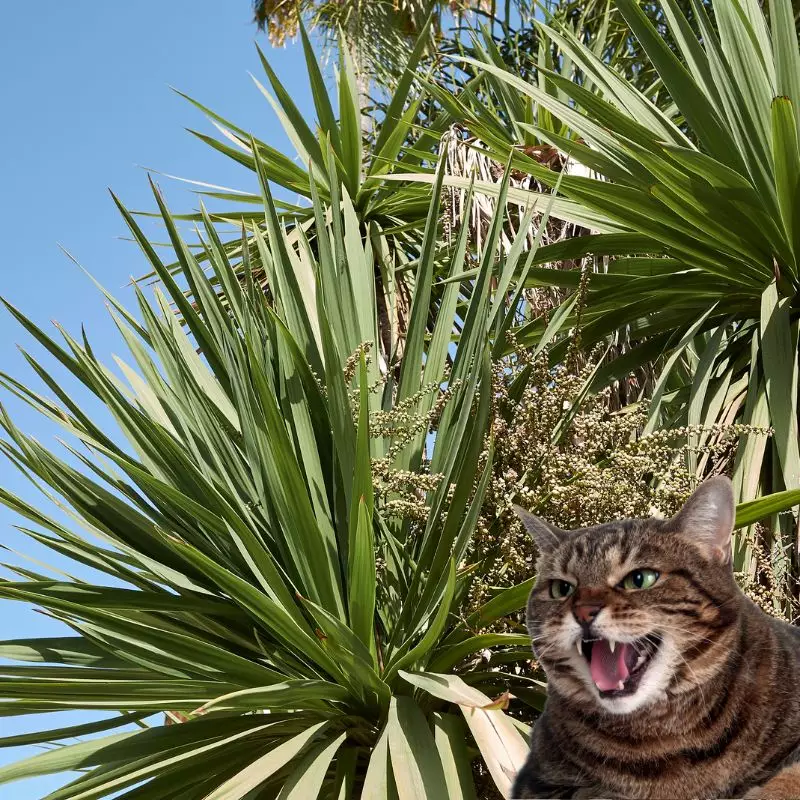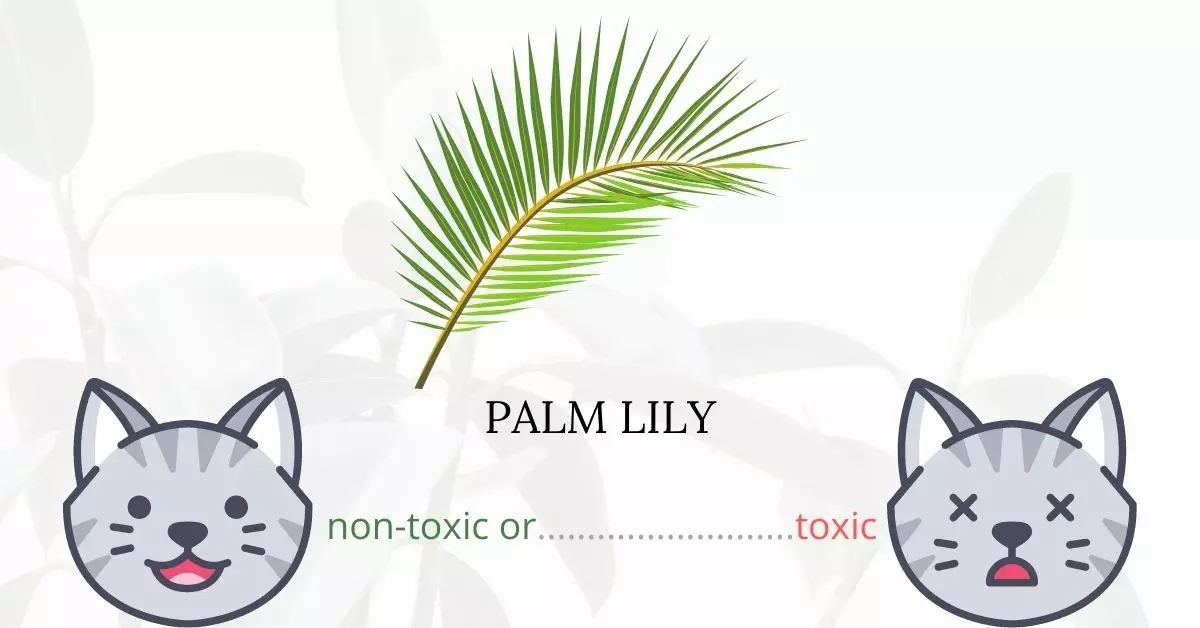Yes, palm lilies are toxic to cats. Saponins, the principal toxins in palm lilies, can lead to unpleasant poisoning symptoms in cats. Although the tree’s toxin concentration is moderate, meaning that while it may make animals sick, it’s unlikely to result in lasting harm or death. One mitigating factor is the strong bitter taste of saponins, which often deters cats from consuming significant amounts of the plant.
This article has been written in collaboration with a team of experienced DVMs (doctors of veterinary medicine). Their expertise, combined with rigorous research from high-authority websites such as ASPCA and PetMD, ensures the accuracy and currency of the information we provide regarding the potential risks associated with various plants, particularly the palm lily and its effects on cats.
Clinical Signs of Palm Lily Poisoning in Cats

If your cat comes into contact with, smells, or ingests the palm lily plant, it might exhibit a range of symptoms stemming from the toxic saponins present in the plant. Here’s a breakdown of these symptoms and their causes:
- Loss of Appetite: The strong bitter taste of the saponins can immediately deter cats from eating, leading to a decrease in appetite.
- Vomiting (sometimes with blood): Saponins can irritate the cat’s stomach lining. If the irritation becomes severe, it can cause vomiting. In some cases, the internal irritation can lead to the presence of blood in the vomit.
- Diarrhea: The body’s response to ingested toxins is to expel them, often leading to diarrhea as the body tries to rid itself of the harmful substance.
- Excessive Salivation: The bitter taste and irritant nature of saponins can stimulate an increased production of saliva as the body’s reflex action to protect the oral cavity and dilute the irritant.
- Depression: The overall physical discomfort and the effects of the toxins on the cat’s system can lead to lethargy and a depressed demeanor.
- Dilated Pupils: Certain toxins, including those found in palm lilies, can affect the nervous system, causing dilated pupils as a reaction.
It’s important to note that while these symptoms can be distressing for both the cat and the owner, unless a cat consumes a substantial amount of palm lily, the symptoms are typically not fatal. However, if any of these signs are observed, it’s crucial to seek veterinary care promptly.
First Aid and Treatment of Palm Lily Poisoning in Cats

The vast majority of the treatment will be symptomatic and supportive in nature. The vet will remove any remaining plant matter from the cat’s mouth, and if vomiting does not occur, hydrogen peroxide may be given orally to induce vomiting.
Depending on the cat’s condition, the vet may administer activated charcoal or perform gastric lavage as needed.
Your cat will be given fluids to help it rehydrate, particularly if it has had multiple episodes of vomiting or diarrhea. Your vet will give your cat drugs like Kapectolin and Sucralfate which act as stomach protectants.
Recovery from Palm Lily Poisoning in Cats

After treatment, your cat will most likely recover and return home. The prognosis is favorable, and cats are expected to recover completely within one to two days. Only animals that consume a large amount of palm lily suffer from life-threatening illnesses.
Prevention of Palm LilyPoisoning in Cats
If you have palm lilies in your home, remove them. If your cat is allowed to roam freely outside, try to identify every plant in your yard and remove any that are poisonous to cats and other small animals. Keeping your cat indoors will also help reduce the possibility of exposure to toxic plants in your surroundings.
If you love plants but have cats at home, check out these lists:





